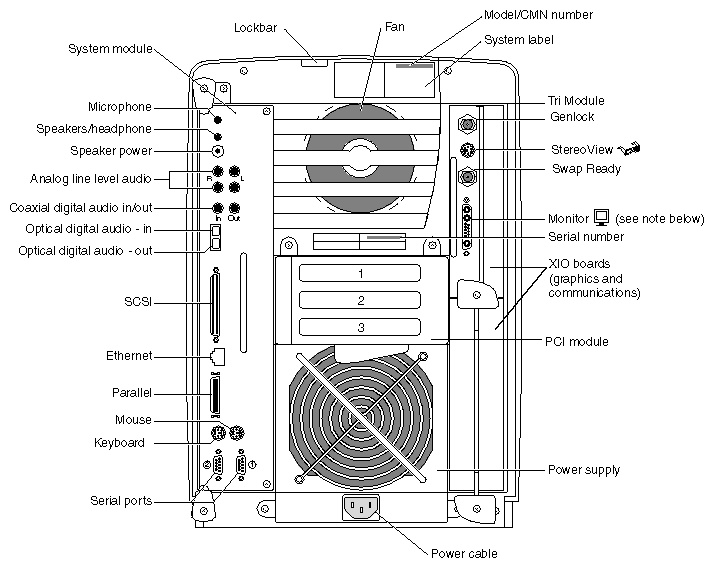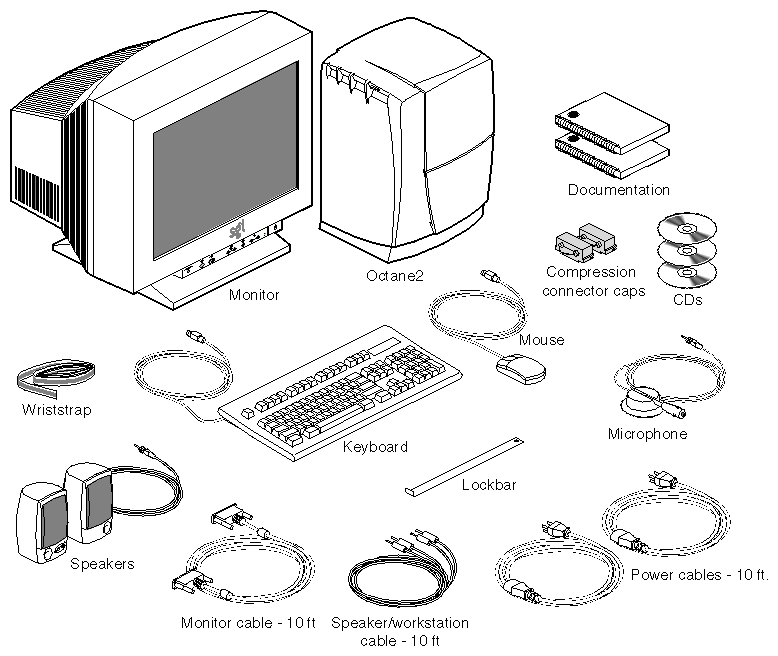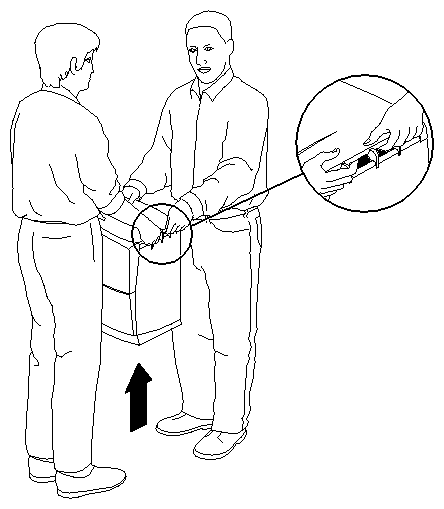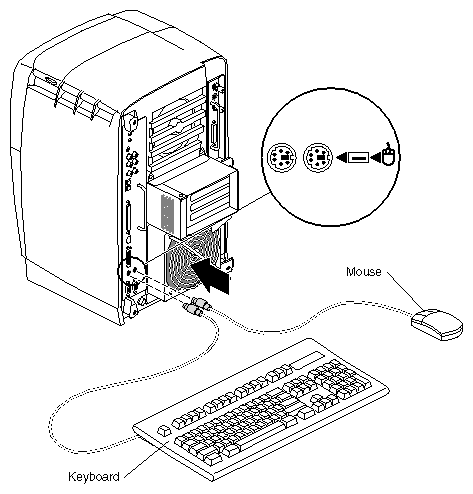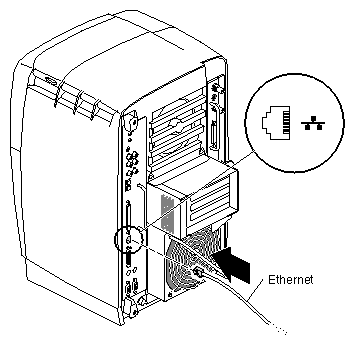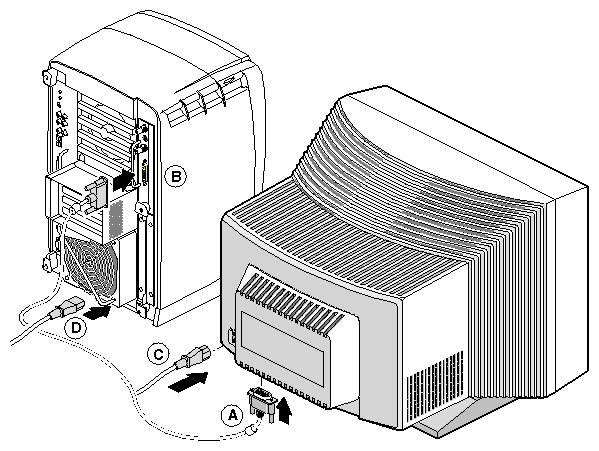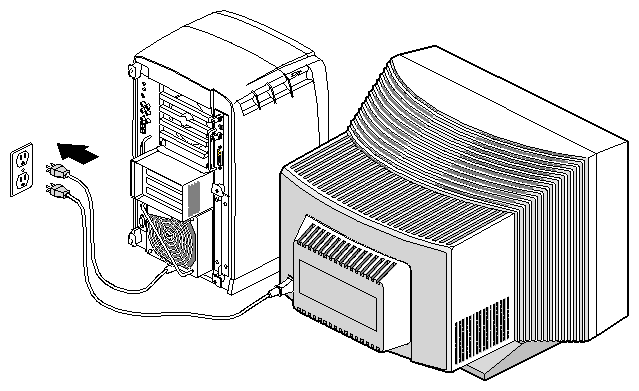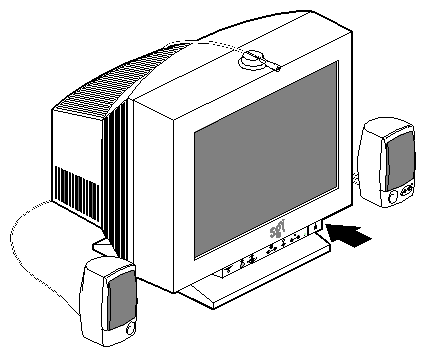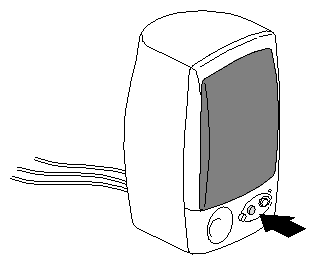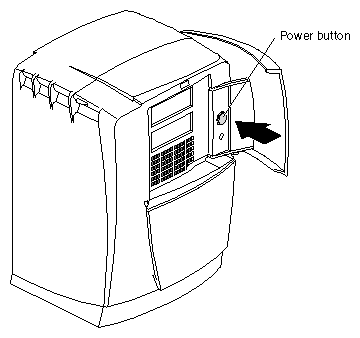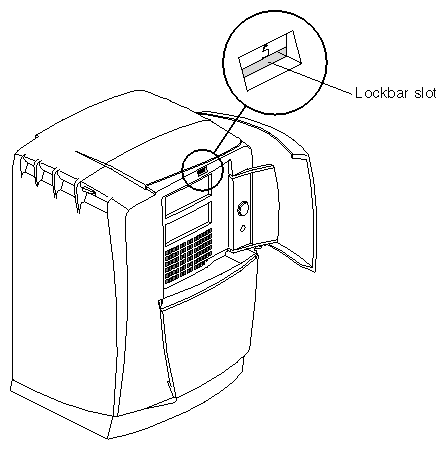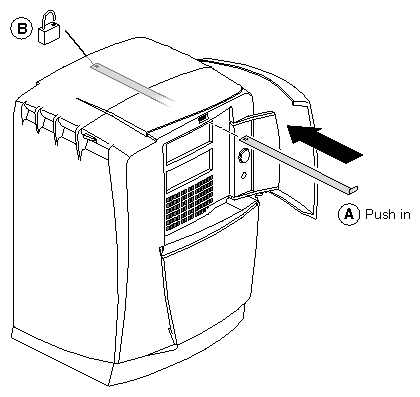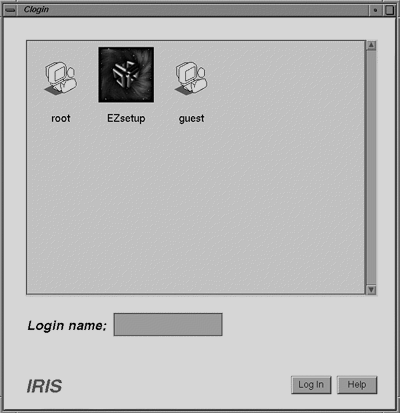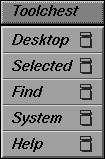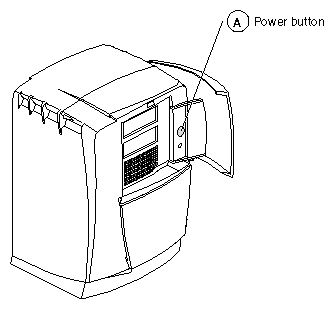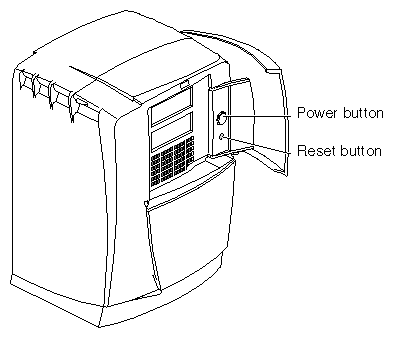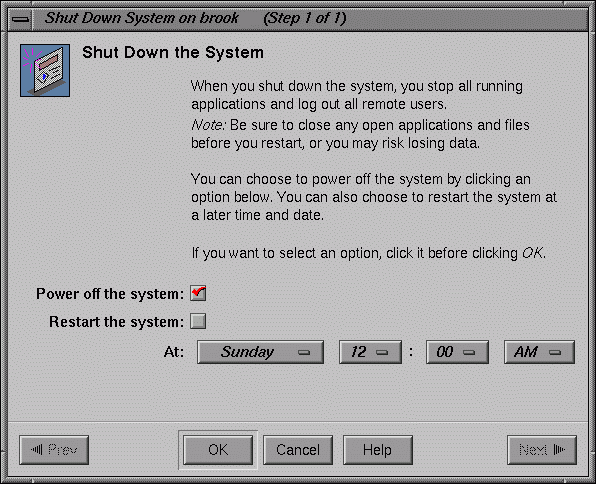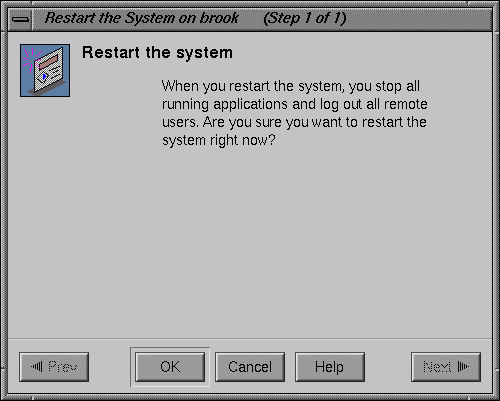This chapter shows you how to set up your Octane2 workstation. The following topics are covered:
To get familiar with your Octane2 workstation, see the following:
Figure 1-1, Figure 1-2, and Figure 1-3 on pages 3-5, which show the front, back, and parts of the workstation.
System Manager > Toolchest > System > System Manager, for information on Octane2 hardware and software.
“About This System,” in Toolchest > System > System Manager, for your system serial number, IP address, operating system, and so on.
Lifting the Octane2 workstation requires two people. Lift the workstation by the air vents at the top of the chassis, as shown in Figure 1-4.
If you have no additional components, memory, or peripherals to install, use the setup poster or the setup procedures (starting on page 7) to set up your Octane2 workstation.
If you have optional components or peripherals, install them before you follow the setup procedures, so you do not have to remove and reinstall cables.
Note the following:
To install additional memory, see Chapter 2, “Installing and Removing the CPU and Memory.”
To install PCI boards and the PCI module, see Chapter 4, “Installing and Removing PCI Boards.”
To install XIO option boards, see the option board installation manual included with the XIO option board, or Chapter 5, “Installing and Removing XIO Boards.”
To install external peripherals or devices, see Chapter 6, “Installing and Removing External Devices,” which includes:
SCSI devices
Serial devices
Audio devices
To install drives (internal peripherals), see Chapter 7, “Installing and Removing Internal Drives and Front Module Parts.”
After you install all optional components, use the setup poster or see “Setting Up the Octane2 Workstation”.
Human factors guidelines for setting up your Octane2 workstation are in Octane2 Hardware Central. You can access this information by choosing Toolchest > Help > Online Books > SGI End User.
To set up the Octane2 workstation, follow these steps:
Attach the keyboard and mouse cables, as shown in Figure 1-5.
Attach the Ethernet cable to the Ethernet port, as shown in Figure 1-6.
Place the speakers on either side of the monitor, as shown in Figure 1-7.
Connect the left (passive) speaker to the right (active) speaker. Use the port labeled L.
Connect the speaker/workstation cables (the cable with two connectors on each end) to the active speaker, as shown in Figure 1-8.
The connectors cannot be installed incorrectly because they are different sizes: male/male on one end, female/male on the other.
Connect the active speaker to your workstation, using the cable with two male connectors on the end, as shown in Figure 1-9.
Set up the microphone, as shown in Figure 1-10.
Attach the cable to the microphone port on your workstation.
Connect the monitor and power cables, as shown in Figure 1-11.
Connect the power cables from your workstation and monitor to an electrical outlet, as shown in Figure 1-12.
Press the power button on your monitor, as shown in Figure 1-13.
Press the power button on the active speaker, as shown in Figure 1-14.
If you are installing the lockbar, see “Locking the Octane2 Workstation”.
If you are not installing the lockbar, proceed to the next step.
Press the power button on your workstation, as shown in Figure 1-15.
You just completed your workstation setup. Now you are ready to log in. See “Logging In to the Octane2 Workstation”.
The lockbar locks the bezel and system module to the chassis. Locking the bezel prevents the option and system drives from being removed. Locking the system module prevents the memory (DIMMs) and processor (CPU) from being removed.
The lockbar slot is located behind your workstation's front door.
Open the door of your workstation.
Locate the lockbar slot, as shown in Figure 1-16.
Slide in the lockbar (A), as shown in Figure 1-17.
Secure it with a lock (B).
Close the door.
Power on your workstation, as shown in Figure 1-18.
You just completed your workstation setup. Now you are ready to log in.
If your system is booting for the first time, you see a login screen similar to the example shown in Figure 1-19.
If you have a login account, an icon with your login name appears. Double-click the icon.
If you do not have a login account, double-click EZsetup, then follow the instructions for creating a personal login account and setting up the networking software.
After creating a personal login account and setting up the networking software, you can create a personal work area and begin communicating with other users on your network.
Now you are ready to use the IRIX Interactive Desktop.
By default, several icons appear on your desktop: a folder icon representing your home directory, a dumpster icon, and icons for any peripherals you installed, as shown in the examples in Figure 1-20.
The peripheral icons show the current state of the respective devices. For example, if you insert a music CD into the compact disc player, the icon changes. When you double-click the icon, it opens CD Player, a utility that allows you to play music from a compact disc.
The Toolchest, located at the top left corner of your screen, provides access to system functions, applications, hardware and software information, and documentation, as shown in Figure 1-21.
| Note: For a complete description of the Toolchest, choose Toolchest > Help > InfoSearch, and type Desktop Users Guide. |
Click Toolchest > System>System Manager to display the System Manager, which shows your workstation's hardware and software information.
Click Toolchest > Help to display the library of online documentation. If your workstation is turned off and you cannot access online documentation, this printed guide contains all the information you need. You can also access this guide and most manuals, man pages, and release notes in the Technical Publications Library at http://techpubs.sgi.com/library, and through InfoSearch, as described in the next section.
Click Toolchest > Help > InfoSearch and type the name of the desired book or topic to search online books, man pages, and release notes that cover end user, developer, and system administrator information. With InfoSearch, you can also access Octane2 Hardware Central and the online version of this guide, as described earlier in this chapter.
The small box next to the Toolchest is the Console window, as shown in Figure 1-22. It appears as a small box because it is minimized. You can open it to its full size by clicking it. Many system error messages appear in this window.
If you click in the Console window, the IRIX shell appears, where you can type IRIX commands. For information on IRIX commands, choose Toolchest > Help > Online Books > SGI_End User > Desktop Users Guide > Using IRIX Commands.
There are two ways to shut down and power off your workstation:
To use the power button to power off your workstation, follow the instructions below.
Open the door on the front of your workstation.
Press the power button, as shown in Figure 1-23.
Within a few seconds, a shutdown notifier appears, as shown in Figure 1-24. Within a minute, the system powers off automatically.
Turn off your monitor by pressing the monitor power button.
If your system does not power off and you do not see any activity for several minutes, follow the next step.
Press the power button again.

Note: If you press the power button a second time, the system should power off immediately, but this method does not perform a clean shutdown. Avoid using this method unless the system does not respond for several minutes after initially pressing the power button. If pressing the power button a second time does not work, use a pencil or pen to press the reset button, shown in Figure 1-25. If the system still fails to power off, unplug the power cable from the back of your workstation and contact your service provider.
If you are logged in with your root password, you can use the System menu in the Toolchest to shut down your system.
Choose Toolchest > System > System Shutdown.
After a few seconds a shutdown caution message appears, as shown in Figure 1-26.
Click the Power Off the System check box.
The Restart the system option appears. At this point, you can shut down and power off the system or restart it at the designated time, as shown in Figure 1-27.
Click OK to shut down and power off the system.
The shutdown notifier appears, as shown in Figure 1-28. After a few seconds, the system powers off.
If you are logged in with your root password, you can use the System menu in the Toolchest to restart.
Choose Toolchest > System > Restart.
After a few seconds the restart notifier appears, as shown in Figure 1-29.
Click OK in the restart notifier.
The shutdown notifier appears, as shown in Figure 1-30.
After a brief delay, the power off/restart notifier appears, as shown in Figure 1-31.
Click Restart in the power off/restart notifier.
The restart notifier informs you that the system is coming up (restarting), as shown in Figure 1-32.

